Discover Breaking Math Podcast
Breaking Math Podcast

Breaking Math Podcast
Author: Gabriel Hesch and Autumn Phaneuf
Subscribed: 7,266Played: 68,375Subscribe
Share
© Copyright Breaking Math
Description
Hosted by Gabriel Hesch and Autumn Phaneuf, who have advanced degrees in EE and industrial engineering/operations research respectively, come together to discuss mathematics as a pure field al in its own as well as how it describes the language of science, engineering, and even creativity.
Breaking Math brings you the absolute best in interdisciplinary science discussions - bringing together experts in varying fields including artificial intelligence, neuroscience, evolutionary biology, physics, chemistry and materials-science, and more - to discuss where humanity is headed.
website: breakingmath.io
linktree: linktree.com/breakingmathmedia
email: breakingmathpodcast@gmail.com
Breaking Math brings you the absolute best in interdisciplinary science discussions - bringing together experts in varying fields including artificial intelligence, neuroscience, evolutionary biology, physics, chemistry and materials-science, and more - to discuss where humanity is headed.
website: breakingmath.io
linktree: linktree.com/breakingmathmedia
email: breakingmathpodcast@gmail.com
117 Episodes
Reverse
Summary: The episode discusses the 10,000 year dilemma, which is a thought experiment on how to deal with nuclear waste in the future. Today's episode is hosted by guest host David Gibson, who is the founder of the Ray Kitty Creation Workshop [https://www.youtube.com/@RayKitty]. (Find out more about the Ray Kitty Creation Workshop by clicking here [https://mrdave.raykitty.com/]).
Gabriel and Autumn are out this week, but will be returning in short order with 3 separate interviews with authors of some fantastic popular science and math books including:
* The Gravity of Math: How Geometry Rules the Universe [https://www.hachettebookgroup.com/titles/steve-nadis/the-gravity-of-math/9781541604292/] by Dr. Shing-Tung Yau and Steve Nadis. This book is all about the history of our understanding of gravity from the theories of Isaac Newton to Albert Einstein and beyond, including gravitational waves, black holes, as well as some of the current uncertainties regarding a precise definition of mass. On sale now!
* EVERYTHING IS PREDICTABLE: How Bayesian Statistics Explain Our World [https://www.netgalley.com/widget/516523/redeem/23dc460e436c2d0582e559b4d84ee909cf774accba78999f2291a8f97813bae0] by Tom Chivers. Published by Simon and Schuster. This book explains the importance of Baye's Theorem in helping us to understand why highly accurate screening tests can lead to false positives, a phenomenon we saw during the Covid-19 pandemic; How a failure to account for Bayes' Theorem has put innocent people in jail; How military strategists using the theorem can predict where an enemy will strike next, and how Baye's Theorem is helping us to understang machine learning processes - a critical skillset to have in the 21st century.
Available 05/07/2024
* A CITY ON MARS: Can we settle space, should we settle space, and have we really thought this through? [https://www.penguinrandomhouse.com/books/639449/a-city-on-mars-by-kelly-and-zach-weinersmith/] by authors Dr. Kelly and Zach Weinersmith. Zach Weinersmith is the artist and creator of the famous cartoon strip Saturday Morning Breaking Cereal [https://www.smbc-comics.com/]!
We've got a lot of great episodes coming up! Stay tuned.
Summary
Brain Organelles, A.I. and Defining Intelligence in Nature-
In this episode, we continue our fascinating interview with GT, a science content creator on TikTok [https://www.tiktok.com/@bearbaitofficial] and YouTube [https://www.youtube.com/@bearbaitofficial] known for their captivating - and sometimes disturbing science content.
GT can be found on the handle '@bearBaitOfficial' on most social media channels.
In this episode, we resume our discussion on Brain Organelles - which are grown from human stem cells - how they are being used to learn about disease, how they may be integrated in A.I. as well as eithical concerns with them.
We also ponder what constitutes intelligence in nature, and even touch on the potential risks of AI behaving nefariously.
You won't want to miss this thought-provoking and engaging discussion.
30% Off ZenCastr Discount
Use My Special Link to save e 30% Off Your First Month of Any ZenCastr Paid Plan [https://zen.ai/1e7eBWWMLcSL_G10VxiSlQ]
Join Sofia Baca and her guests Millicent Oriana from Nerd Forensics and Arianna Lunarosa as they discuss energy.
The sound that you're listening to, the device that you're listening on, and the cells in both the ear you're using to listen and the brain that understands these words have at least one thing in common: they represent the consumption or transference of energy. The same goes for your eyes if you're reading a transcript of this. The waves in the ears are pressure waves, while eyes receive information in the form of radiant energy, but they both are still called "energy". But what is energy? Energy is a scalar quantity measured in dimensions of force times distance, and the role that energy plays depends on the dynamics of the system. So what is the difference between potential and kinetic energy? How can understanding energy simplify problems? And how do we design a roller coaster in frictionless physics land?[Featuring: Sofia Baca; Millicent Oriana, Arianna Lunarosa]
This episode is distributed under a Creative Commons Attribution-ShareAlike 4.0 International License. Full text here: https://creativecommons.org/licenses/by-sa/4.0/
An interview with Dr. Sabine Hossenfelder about her second book Existential Physics [https://www.penguinrandomhouse.com/books/616868/existential-physics-by-sabine-hossenfelder/]. Sabine is host of the famous youtube show Science with Sabine [https://www.youtube.com/@SabineHossenfelder].
The world around us is a four-dimensional world; there are three spatial dimensions, and one temporal dimension. Many of these objects emit an almost unfathomable number of photons. As we developed as creatures on this planet, we gathered the ability to sense the world around us; and given the amount of information represented as photons, it is no surprise that we developed an organ for sensing photons. But because of the amount of photons that are involved, and our relatively limited computational resources, it is necessary to develop shortcuts if we want to simulate an environment in silico. So what is raytracing? How is that different from what happens in games? And what does Ptolemy have to do with 3D graphics? All of this and more on this episode of Breaking Math.
Theme was Breaking Math Theme and outro was Breaking Math Outro by Elliot Smith of Albuquerque.
This episode is distributed under a Creative Commons Attribution-ShareAlike 4.0 International license. License information can be found here: https://creativecommons.org/licenses/by-sa/4.0/
[Featuring: Sofía Baca, Gabriel Hesch]
Physical objects are everywhere, and they're all made out of molecules, and atoms. However, the arrangement and refinement of these atoms can be the difference between a computer and sand, or between a tree and paper. For a species as reliant on tool use, the ability to conceieve of, design, create, and produce these materials is an ongoing concern. Since we've been around as humans, and even before, we have been material scientists in some regard, searching for new materials to make things out of, including the tools we use to make things. So what is the difference between iron and steel? How do we think up new things to make things out of? And what are time crystals? All of this and more on this episode of Breaking Math.
This episode is released under a Attribution-NonCommercial 4.0 International (CC BY-NC 4.0) license. More information here: https://creativecommons.org/licenses/by-nc/4.0/
[Featuring: Sofía Baca, Gabriel Hesch; Taylor Sparks]
An interview with Prof. Marcus du Sautoy about his book Around the Wold in Eighty Games . . . .a Mathematician Unlocks the Secrets of the World's Greatest Games.
Topics covered in Today's Episode:
1. Introduction to Professor Marcus du Sautoy and the Role of Games
- Impact of games on culture, strategy, and learning
- The educational importance of games throughout history
2. Differences in gaming cultures across regions like India and China
3. Creative Aspects of Mathematics
4. The surprising historical elements and banned games by Buddha
5. Historical and geographical narratives of games rather than rules
6. Game Theory and Education
7. Unknowable questions like thermodynamics and universe's infinity
8. Professor du Sautoy's Former Books and Collections
9. A preview of his previous books and their themes
10. Gaming Cultures and NFTs in Blockchain
11. Gamification in Education
12. The Role of AI in Gaming
13. Testing machine learning in mastering games like Go
14. Alphago's surprising move and its impact on Go strategies
15 . The future of AI in developing video game characters, plots, and environments
16. Conclusion and Giveaway Announcement
*Free Book Giveaway of Around The World in 88 Games . . . by Professor Marcus Du Sautory! Follow us on our socials for details:
Follow us on X: @BreakingMathPod [https://twitter.com/breakingmathpod]
Follow us on Instagram: @Breaking Math Media [https://www.instagram.com/breakingmathmedia/]
Email us: BreakingMathPodacst@gmail.com
This episode is inspired by a correspondence the Breaking Math Podcast had with the editors of Digital Discovery, a journal by the Royal Society of Chemistry. In this episode the hosts review a paper [https://pubs.rsc.org/en/content/articlelanding/2024/dd/d3dd00077j] about how the Lean Interactive Theorem Prover, which is usually used as a tool in creating mathemtics proofs, can be used to create rigorous and robust models in physics and chemistry.
Also - we have a brand new member of the Breaking Math Team! This episode is the debut episode for Autumn, CEO of Cosmo Labs, occasional co-host / host of the Breaking Math Podcast, and overall contributor who has been working behind the scenes on the podcast on branding and content for the last several months. Welcome Autumn!
Autumn and Gabe discuss how the paper explores the use of interactive theorem provers to ensure the accuracy of scientific theories and make them machine-readable. The episode discusses the limitations and potential of interactive theorem provers and highlights the themes of precision and formal verification in scientific knowledge. This episode also provide resources (listed below) for listeners interested in learning more about working with the LEAN interactive theorem prover.
Takeaways
* Interactive theorem provers can revolutionize the way scientific theories are formulated and verified, ensuring mathematical certainty and minimizing errors.
* Interactive theorem provers require a high level of mathematical knowledge and may not be accessible to all scientists and engineers.
* Formal verification using interactive theorem provers can eliminate human error and hidden assumptions, leading to more confident and reliable scientific findings.
* Interactive theorem provers promote clear communication and collaboration across disciplines by forcing explicit definitions and minimizing ambiguities in scientific language. Lean Theorem Provers enable scientists to construct modular and reusable proofs, accelerating the pace of knowledge acquisition.
* Formal verification presents challenges in terms of transforming informal proofs into a formal language and bridging the reality gap.
* Integration of theorem provers and machine learning has the potential to enhance creativity, verification, and usefulness of machine learning models.
* The limitations and variables in formal verification require rigorous validation against experimental data to ensure real-world accuracy.
* Lean Theorem Provers have the potential to provide unwavering trust, accelerate innovation, and increase accessibility in scientific research.
* AI as a scientific partner can automate the formalization of informal theories and suggest new conjectures, revolutionizing scientific exploration.
* The impact of Lean Theorem Provers on humanity includes a shift in scientific validity, rapid scientific breakthroughs, and democratization of science.
Help Support The Podcast by clicking on the links below:
* Try out ZenCastr w/ 30% Discount [https://zen.ai/1e7eBWWMLcSL_G10VxiSlQ]Use my special link [https://zen.ai/1e7eBWWMLcSL_G10VxiSlQ] to save 30% off your first month of any Zencastr paid plan
* Patreon [https://www.patreon.com/breakingmath]
* YouTube [https://www.youtube.com/@breakingmathpod]
* Breaking Math Website [http://breakingmath.io/]Email us for copies of the transcript!
This conversation explores the topic of brain organoids and their integration with robots. The discussion covers the development and capabilities of brain organoids, the ethical implications of their use, and the differences between sentience and consciousness. The conversation also delves into the efficiency of human neural networks compared to artificial neural networks, the presence of sleep in brain organoids, and the potential for genetic memories in these structures. The episode concludes with an invitation to part two of the interview and a mention of the podcast's Patreon offering a commercial-free version of the episode.
Takeaways
* Brain organoids are capable of firing neural signals and forming structures similar to those in the human brain during development.
* The ethical implications of using brain organoids in research and integrating them with robots raise important questions about sentience and consciousness.
* Human neural networks are more efficient than artificial neural networks, but the reasons for this efficiency are still unknown.
* Brain organoids exhibit sleep-like patterns and can undergo dendrite growth, potentially indicating learning capabilities.
* Collaboration between scientists with different thinking skill sets is crucial for advancing research in brain organoids and related fields.
Chapters
1. 00:00 Introduction: Brain Organoids and Robots
2. 00:39 Brain Organoids and Development
3. 01:21 Ethical Implications of Brain Organoids
4. 03:14 Summary and Introduction to Guest
5. 03:41 Sentience and Consciousness in Brain Organoids
6. 04:10 Neuron Count and Pain Receptors in Brain Organoids
7. 05:00 Unanswered Questions and Discomfort
8. 05:25 Psychological Discomfort in Brain Organoids
9. 06:21 Early Videos and Brain Organoid Learning
10. 07:20 Efficiency of Human Neural Networks
11. 08:12 Sleep in Brain Organoids
12. 09:13 Delta Brainwaves and Brain Organoids
13. 10:11 Creating Brain Organoids with Specific Components
14. 11:10 Genetic Memories in Brain Organoids
15. 12:07 Efficiency and Learning in Human Brains
16. 13:00 Sequential Memory and Chimpanzees
17. 14:18 Different Thinking Skill Sets and Collaboration
18. 16:13 ADHD and Hyperfocusing
19. 18:01 Ethical Considerations in Brain Research
20. 19:23 Understanding Genetic Mutations
21. 20:51 Brain Organoids in Rat Bodies
22. 22:14 Dendrite Growth in Brain Organoids
23. 23:11 Duration of Dendrite Growth
24. 24:26 Genetic Memory Transfer in Brain Organoids
25. 25:19 Social Media Presence of Brain Organoid Companies
26. 26:15 Brain Organoids Controlling Robot Spiders
27. 27:14 Conclusion and Invitation to Part 2
References:
Muotri Labs (Brain Organelle piloting Spider Robot) [https://pediatrics.ucsd.edu/research/faculty-labs/muotri-lab/index.html]
Cortical Labs (Brain Organelle's trained to play Pong) [https://corticallabs.com/]
*For a copy of the episode transcript, email us at breakingmathpodcast@gmail.com
Help Support The Podcast by clicking on the links below:
* Start YOUR podcast on ZenCastr!
Use my special link ZenCastr Discount [https://zen.ai/1e7eBWWMLcSL_G10VxiSlQ] to save 30% off your first month of any Zencastr paid plan
* Visit our Patreon [http://www.patreon.com/breakingmath]
Summary:
This is a follow up on our previous episode on OpenAi's SORA [https://www.youtube.com/watch?v=LqQe3Fy9T9Y&t=611s]. We attempt to answer the question, "Can OpenAi's SORA model real-world physics?"
We go over the details of the technical report, we discuss some controversial opinoins by experts in the field at Nvdia and Google's Deep Mind.
The transcript for episode is avialable below upon request.
Help Support The Podcast by clicking on the links below:
* Try out ZenCastr: Use my special link ZenCastr Discount to save 30% off your first month of any Zencastr paid plan [https://zen.ai/1e7eBWWMLcSL_G10VxiSlQ]
* Patreon Link: All content is available commercial free on patreon [http://www.patreon.com/breakingmath]
* YouTube Channel: Enjoy this content? subscribe to our YouTube Channel [https://www.youtube.com/@breakingmathpod]
OpenAI's Sora, a text-to-video model, has the ability to generate realistic and imaginative scenes based on text prompts. This conversation explores the capabilities, limitations, and safety concerns of Sora. It showcases various examples of videos generated by Sora, including pirate ships battling in a cup of coffee, woolly mammoths in a snowy meadow, and golden retriever puppies playing in the snow. The conversation also discusses the technical details of Sora, such as its use of diffusion and transformer models. Additionally, it highlights the potential risks of AI fraud and impersonation. The episode concludes with a look at the future of physics-informed modeling and a call to action for listeners to engage with Breaking Math content.
Takeaways
* OpenAI's Sora is a groundbreaking text-to-video model that can generate realistic and imaginative scenes based on text prompts.
* Sora has the potential to revolutionize various industries, including entertainment, advertising, and education.
* While Sora's capabilities are impressive, there are limitations and safety concerns, such as the potential for misuse and the need for robust verification methods.
* The conversation highlights the importance of understanding the ethical implications of AI and the need for ongoing research and development in the field.
Chapters
00:00 Introduction to OpenAI's Sora
04:22 Overview of Sora's Capabilities
07:08 Exploring Prompts and Generated Videos
12:20 Technical Details of Sora
16:33 Limitations and Safety Concerns
23:10 Examples of Glitches in Generated Videos
26:04 Impressive Videos Generated by Sora
29:09 AI Fraud and Impersonation
35:41 Future of Physics-Informed Modeling
36:25 Conclusion and Call to Action
Help Support The Podcast by clicking on the links below:
* Start YOUR podcast on ZenCastr!
Use my special link ZenCastr Discount [https://zen.ai/1e7eBWWMLcSL_G10VxiSlQ] to save 30% off your first month of any Zencastr paid plan
* Visit our Patreon [http://www.patreon.com/breakingmath]
Contact us at breakingmathpodcast@gmail.com
Summary
#OpenAiSora #
Help Support The Podcast by clicking on the links below:
* Try out ZenCastr w/ 30% Discount Use my special link to save 30% off your first month of any Zencastr paid plan [https://zen.ai/1e7eBWWMLcSL_G10VxiSlQ]
* Patreon [https://www.patreon.com/breakingmath]
* YouTube [https://www.youtube.com/@breakingmathpod]
Transcripts are available upon request. Email us at BreakingMathPodcast@gmail.com
Follow us on X (Twitter) [https://twitter.com/breakingmathpod]
Follow us on Social Media Pages (Linktree) [https://linktr.ee/breakingmathmedia]
Visit our guest Levi McClain's Pages:
youtube.com/@LeviMcClain [https://www.youtube.com/@LeviMcClain]
levimcclain.com/ [https://www.levimcclain.com/]
Summary
Levi McClean discusses various topics related to music, sound, and artificial intelligence. He explores what makes a sound scary, the intersection of art and technology, sonifying data, microtonal tuning, and the impact of using 31 notes per octave. Levi also talks about creating instruments for microtonal music and using unconventional techniques to make music. The conversation concludes with a discussion on understanding consonance and dissonance and the challenges of programming artificial intelligence to perceive sound like humans do.
Takeaways:
* The perception of scary sounds can be analyzed from different perspectives, including composition techniques, acoustic properties, neuroscience, and psychology.
* Approaching art and music with a technical mind can lead to unique and innovative creations.
* Sonifying data allows for the exploration of different ways to express information through sound.
* Microtonal tuning expands the possibilities of harmony and offers new avenues for musical expression.
* Creating instruments and using unconventional techniques can push the boundaries of traditional music-making.
* Understanding consonance and dissonance is a complex topic that varies across cultures and musical traditions.
* Programming artificial intelligence to understand consonance and dissonance requires a deeper understanding of human perception and cultural context.
Chapters
00:00 What Makes a Sound Scary
03:00 Approaching Art and Music with a Technical Mind
05:19 Sonifying Data and Turning it into Sound
08:39 Exploring Music with Microtonal Tuning
15:44 The Impact of Using 31 Notes per Octave
17:37 Why 31 Notes Instead of Any Other Arbitrary Number
19:53 Creating Instruments for Microtonal Music
21:25 Using Unconventional Techniques to Make Music
23:06 Closing Remarks and Questions
24:03 Understanding Consonance and Dissonance
25:25 Programming Artificial Intelligence to Understand Consonance and Dissonance
We are joined today by content creator Levi McClain to discuss the mathematics behind music theory, neuroscience, and human experiences such as fear as they relate to audio processing.
For a copy of the episode transcript, email us at BreakingMathPodcast@gmail.com.
For more in depth discussions on these topics and more, check out Levi's channels at:
Patreon.com/LeviMcClain [https://patreon.com/LeviMcClain]
youtube.com/@LeviMcClain [http://www.youtube.com/@LeviMcClain]
Tiktok.com/@levimcclain [https://tiktok.com/@levimcclainmusic]
Instagram.com/levimcclainmusic [https://instagram/levimcclainmusic]
Help Support The Podcast by clicking on the links below:
* Start YOUR podcast on ZenCastr!
Use my special link ZenCastr Discount [https://zen.ai/1e7eBWWMLcSL_G10VxiSlQ] to save 30% off your first month of any Zencastr paid plan
* Visit our Patreon [http://www.patreon.com/breakingmath]
Help Support The Podcast by clicking on the links below:
* Start YOUR podcast on ZenCastr!
Use my special link ZenCastr Discount [https://zen.ai/1e7eBWWMLcSL_G10VxiSlQ] to save 30% off your first month of any Zencastr paid plan
* Visit our Patreon [http://www.patreon.com/breakingmath]
Part 2/2 of the interview with Brit Cruise, creator of the YouTube channel "Art of the Problem," about interesting mathematics,, electrical and computer engineering problems.
In Part 1, we explored what 'intelligence' may be defined as by looking for examples of brains and proto-brains found in nature (including mold, bacteria, fungus, insects, fish, reptiles, and mammals).
In Part 2, we discuss aritifical neural nets and how they are both similar different from human brains, as well as the ever decreasing gap between the two.
Brit's YoutTube Channel can be found here: Art of the Problem - Brit Cruise [https://youtube.com/@ArtOfTheProblem?si=xh7uyOwCUInqfWsC]
Transcript will be made available soon! Stay tuned. You may receive a transcript by emailing us at breakingmathpodcast@gmail.com.
Become a supporter of this podcast: https://www.spreaker.com/podcast/breaking-math-podcast--5545277/support [https://www.spreaker.com/podcast/breaking-math-podcast--5545277/support?utm_source=rss&utm_medium=rss&utm_campaign=rss].
In this episode (part 1 of 2), I interview Brit Cruise, creator of the YouTube channel 'Art of the Problem.' On his channel, he recently released the video "ChatGPT: 30 Year History | How AI learned to talk." We discuss examples of intelligence in nature and what is required in order for a brain to evolve at the most basic level. We use these concepts to discuss what artificial intelligence - such as Chat GPT - both is and is not.
Help Support The Podcast by clicking on the links below:
* Start YOUR podcast on ZenCastr! Use my special link ZenCastr Discount [https://zen.ai/1e7eBWWMLcSL_G10VxiSlQ] to save 30% off your first month of any Zencastr paid plan
* Visit our Patreon [http://www.patreon.com/breakingmath]
Transcripts of this episode are avialable upon request. Email us at BreakingMathPodcast@gmail.com.
In this episode Gabriel Hesch interviews Taylor Sparks, a professor of material science and engineering, about his recent paper on the use of generative modeling a.i. for material disovery. The paper is published in the journal Digital Discovery and is titled 'Generative Adversarial Networks and Diffusion MOdels in Material Discovery. They discuss the purpose of the call, the process of generative modeling, creating a representation for materials, using image-based generative models, and a comparison with Google's approach. They also touch on the concept of conditional generation of materials, the importance of open-source resources and collaboration, and the exciting developments in materials and AI. The conversation concludes with a discussion on future collaboration opportunities.
Takeaways
* Generative modeling is an exciting approach in materials science that allows for the prediction and creation of new materials.
* Creating a representation for materials, such as using the crystallographic information file, enables the application of image-based generative models.
* Google's approach to generative modeling received attention but also criticism for its lack of novelty and unconditioned generation of materials.
* Open-source resources and collaboration are crucial in advancing materials informatics and machine learning in the field of materials science.
Help Support The Podcast by clicking on the links below:
* Start YOUR podcast on ZenCastr! Use my special link ZenCastr Discount [https://zen.ai/1e7eBWWMLcSL_G10VxiSlQ] to save 30% off your first month of any Zencastr paid plan
* Visit our Patreon [http://www.patreon.com/breakingmath]
How is Machine Learning being used to further original scientific discoveries?
In October of 2023, Sofia Baca passed away unexpectedly from natural causes. Sofia was one of the founders and cohosts of the Breaking Math Podcast. In this episode, host Gabriel Hesch interviews Diane Baca, mother of Sofia Baca as we talk about her passions for creativity, mathematics, science, and discovering what it means to be human.
Sofia lived an exceptional life with explosive creativity, a voracious passion for mathematics, physics, computer science, and creativity. Sofia also struggled immensely with mental health issues which included substance abuse as well as struggling for a very long time understand the source of their discontent. Sofia found great happiness in connecting with other people through teaching, tutoring, and creative expression. The podcast will continue in honor of Sofia. There are many folders of ideas that Sofia left with ideas for the show or for other projects. We will continue this show with sharing some of these ideas, but also with sharing stories of Sofia - including her ideas and her struggles in hopes that others may find solace in that they are not alone in their struggles. But also in hopes that others may find inspiration in what Sofia had to offer.
We miss you dearly, Sofia.
Join Sofía Baca and her guests, the host and co-host of the Nerd Forensics podcast, Millicent Oriana and Jacob Urban, as they explore what it means to be able to solve one problem in multiple ways.
This episode is distributed under a Creative Commons Attribution-ShareAlike 4.0 International License. For full text, visit: https://creativecommons.org/licenses/by-sa/4.0/
[Featuring: Sofía Baca; Millicent Oriana, Jacob Urban[
Help Support The Podcast by clicking on the links below:
* Try out ZenCastr w/ 30% Discount [https://zen.ai/1e7eBWWMLcSL_G10VxiSlQ]
Use my special link [https://zen.ai/1e7eBWWMLcSL_G10VxiSlQ] to save 30% off your first month of any Zencastr paid plan
* Patreon [https://www.patreon.com/breakingmath]
* YouTube [https://www.youtube.com/@breakingmathpod]
* Breaking Math Website [http://breakingmath.io/]Email us for copies of the transcript!
The history of mathematics, in many ways, begins with counting. Things that needed, initially, to be counted were, and often still are, just that; things. We can say we have twelve tomatoes, or five friends, or that eleven days have passed. As society got more complex, tools that had been used since time immemorial, such as string and scales, became essential tools for counting not only concrete things, like sheep and bison, but more abstract things, such as distance and weight based on agreed-upon multiples of physical artifacts that were copied. This development could not have taken place without the idea of a unit: a standard of measuring something that defines what it means to have one of something. These units can be treated not only as counting numbers, but can be manipulated using fractions, and divided into arbitrarily small divisions. They can even be multiplied and divided together to form new units. So where does the idea of a unit come from? What's the difference between a unit, a dimension, and a physical variable? And how does the idea of physical dimension allow us to simplify complex problems? All of this and more on this episode of Breaking Math.
Distributed under a CC BY-SA 4.0 International License. For full text, visit: https://creativecommons.org/licenses/by-sa/4.0/
[Featuring: Sofía Baca; Millicent Oriana, Jacob Urban]
Help Support The Podcast by clicking on the links below:
* Try out ZenCastr w/ 30% Discount [https://zen.ai/1e7eBWWMLcSL_G10VxiSlQ]Use my special link [https://zen.ai/1e7eBWWMLcSL_G10VxiSlQ] to save 30% off your first month of any Zencastr paid plan
* Patreon [https://www.patreon.com/breakingmath]
* YouTube [https://www.youtube.com/@breakingmathpod]
* Breaking Math Website [http://breakingmath.io/]Email us for copies of the transcript!
Help Support The Podcast by clicking on the links below:
* Try out ZenCastr w/ 30% Discount [https://zen.ai/1e7eBWWMLcSL_G10VxiSlQ]Use my special link [https://zen.ai/1e7eBWWMLcSL_G10VxiSlQ] to save 30% off your first month of any Zencastr paid plan
* Patreon [https://www.patreon.com/breakingmath]
* YouTube [https://www.youtube.com/@breakingmathpod]
* Breaking Math Website [http://breakingmath.io/]Email us for copies of the transcript!
Join Sofia Baca and Nerd Forensics co-host Jacob Urban as they discuss all things counting!
Counting is the first arithmetic concept we learn, and we typically learn to do so during early childhood. Counting is the basis of arithmetic. Before people could manipulate numbers, numbers had to exist. Counting was first done on the body, before it was done on apparatuses outside the body such as clay tablets and hard drives. However, counting has become an invaluable tool in mathematics itself, as became apparent when counting started to be examined analytically. How did counting begin? What is the study of combinatorics? And what can be counted? All of this and more, on this episode of Breaking Math.
This episode is distributed under a Creative Commons Attribution-ShareAlike 4.0 International License (full text: https://creativecommons.org/licenses/by-sa/4.0/)
[Featuring: Sofia Baca; Jacob Urban]





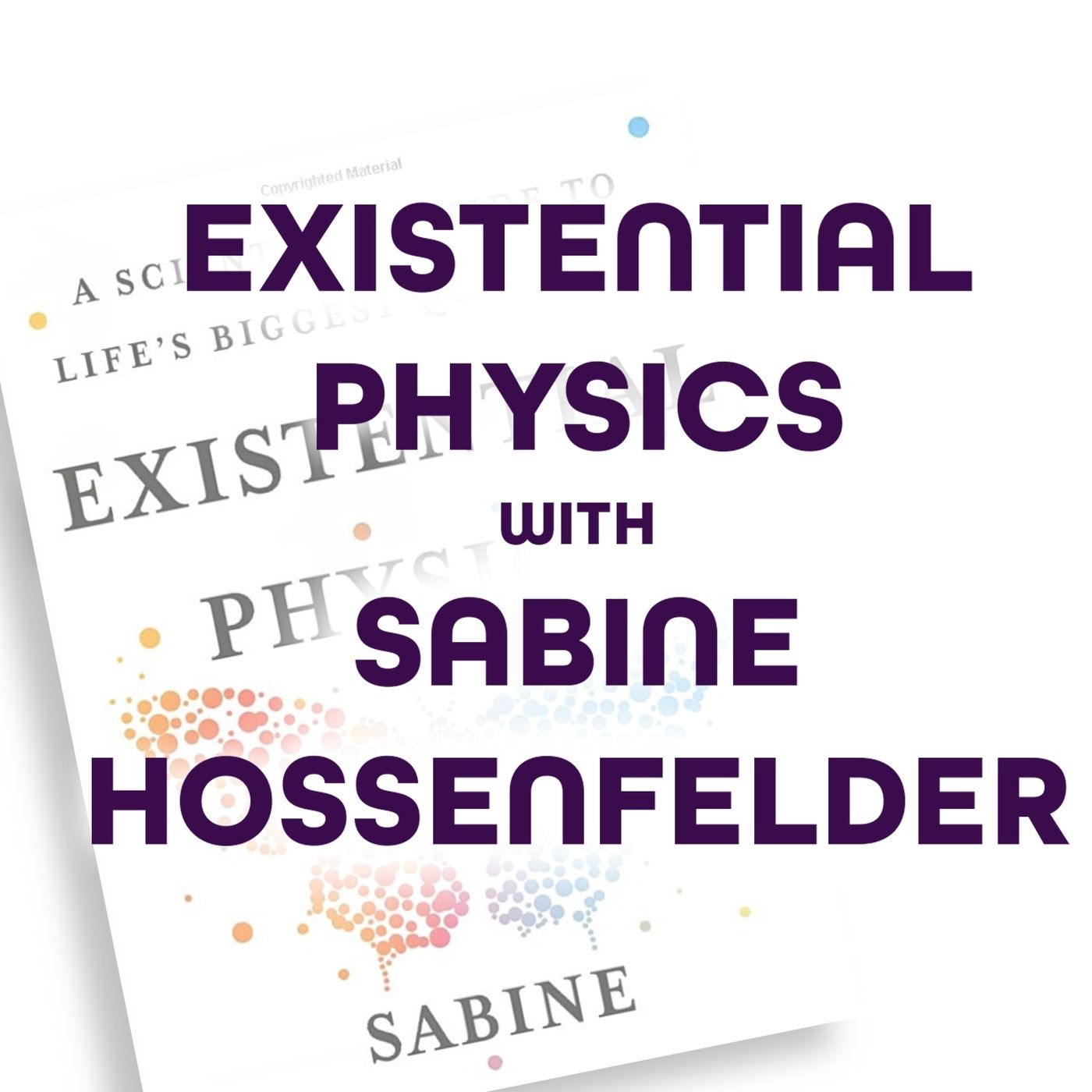




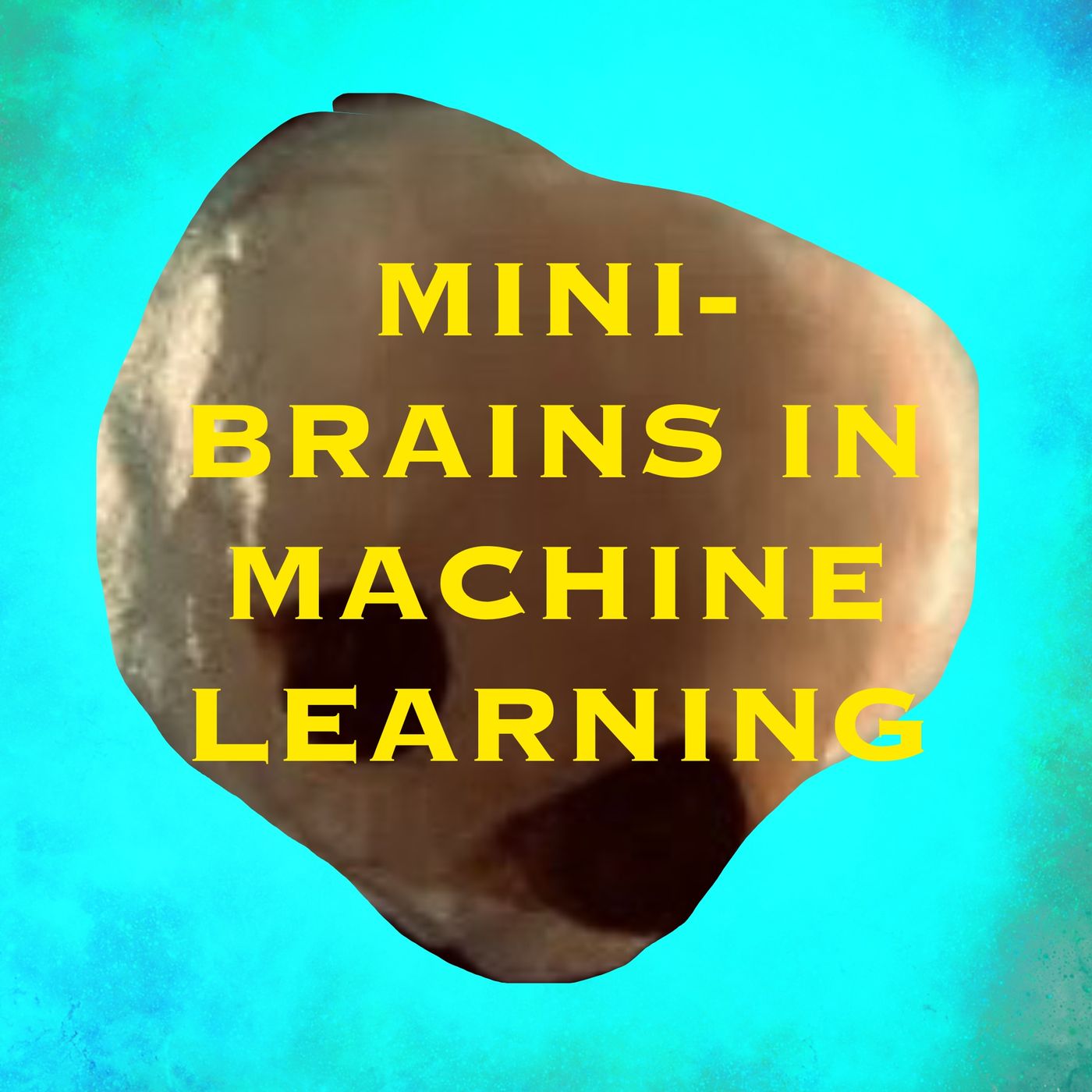
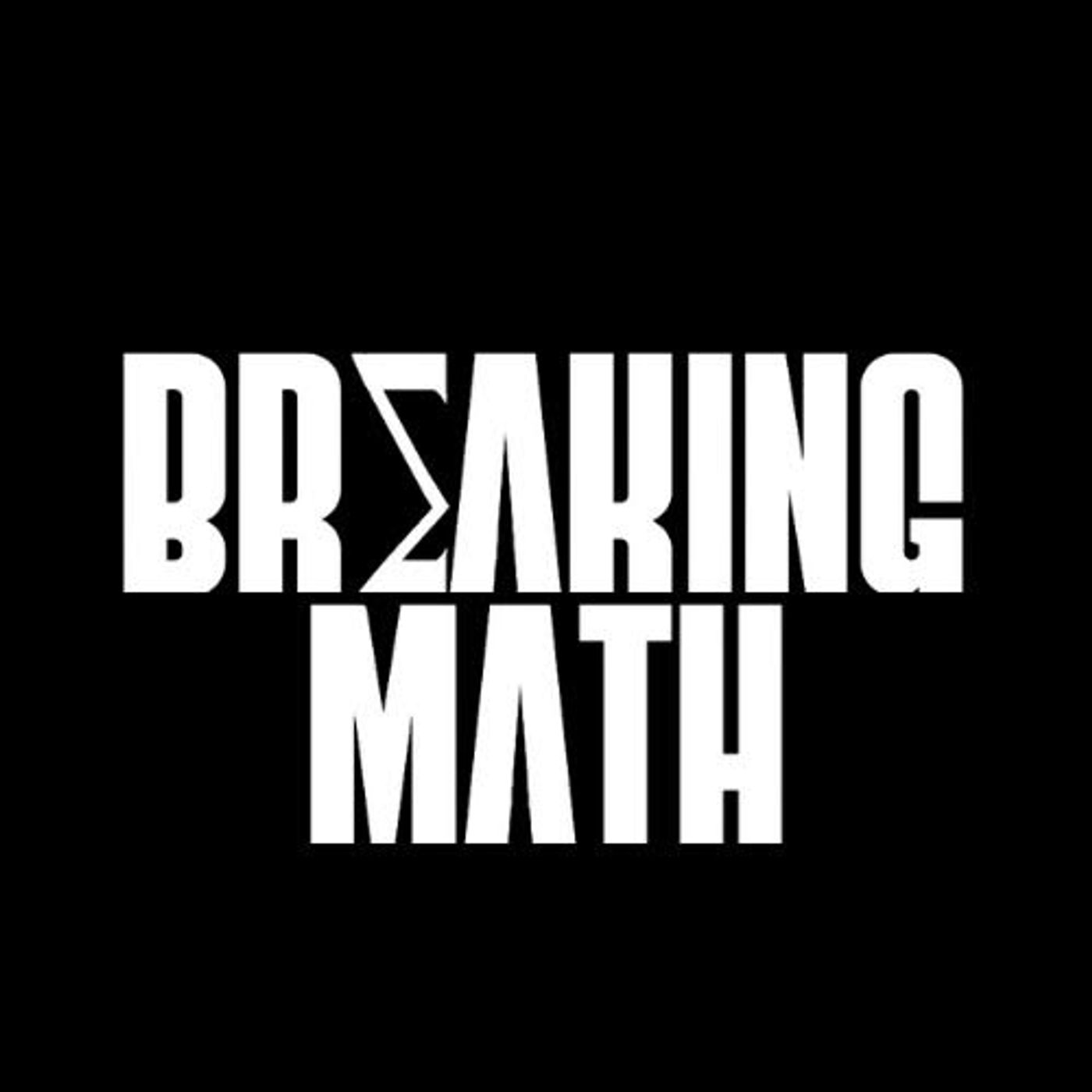
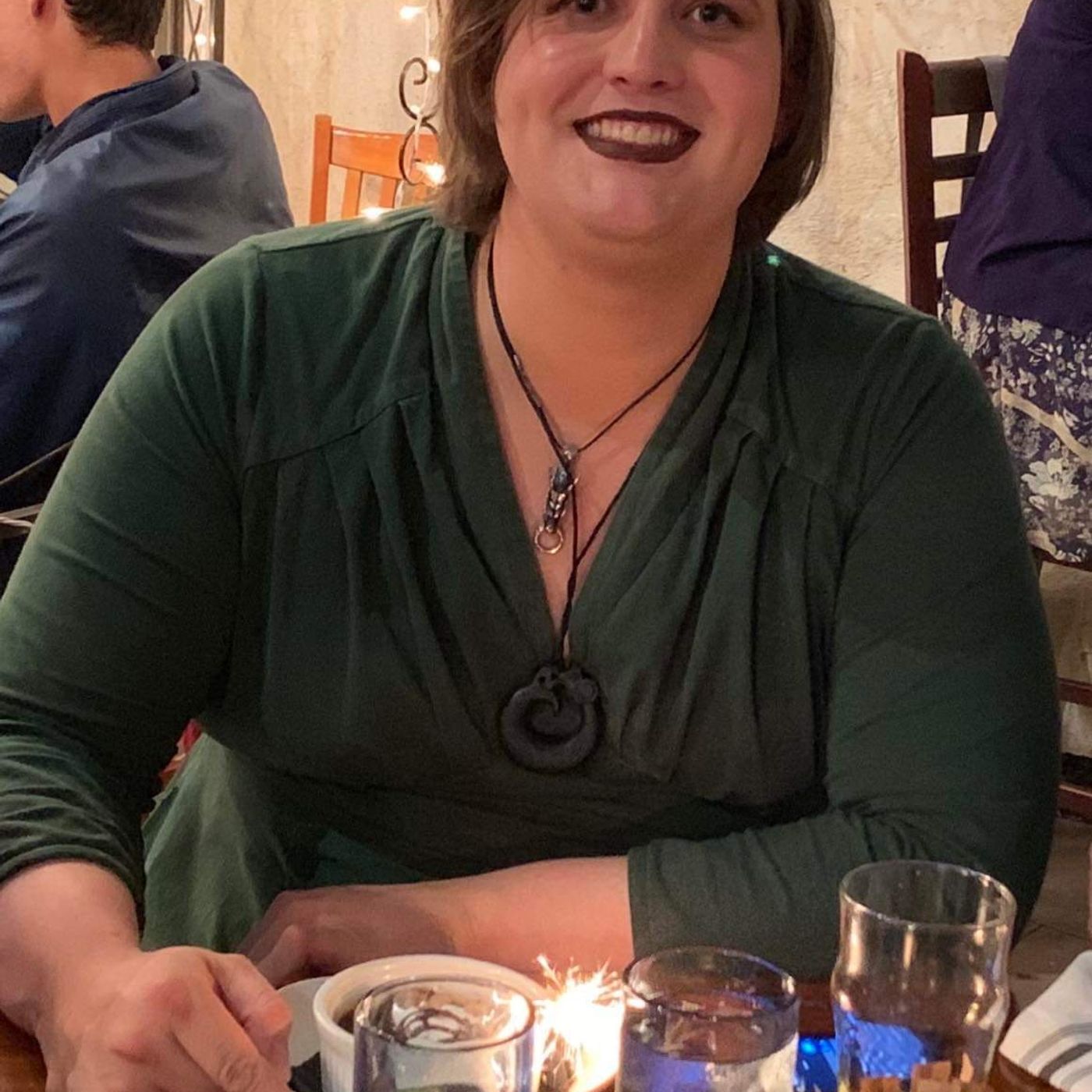

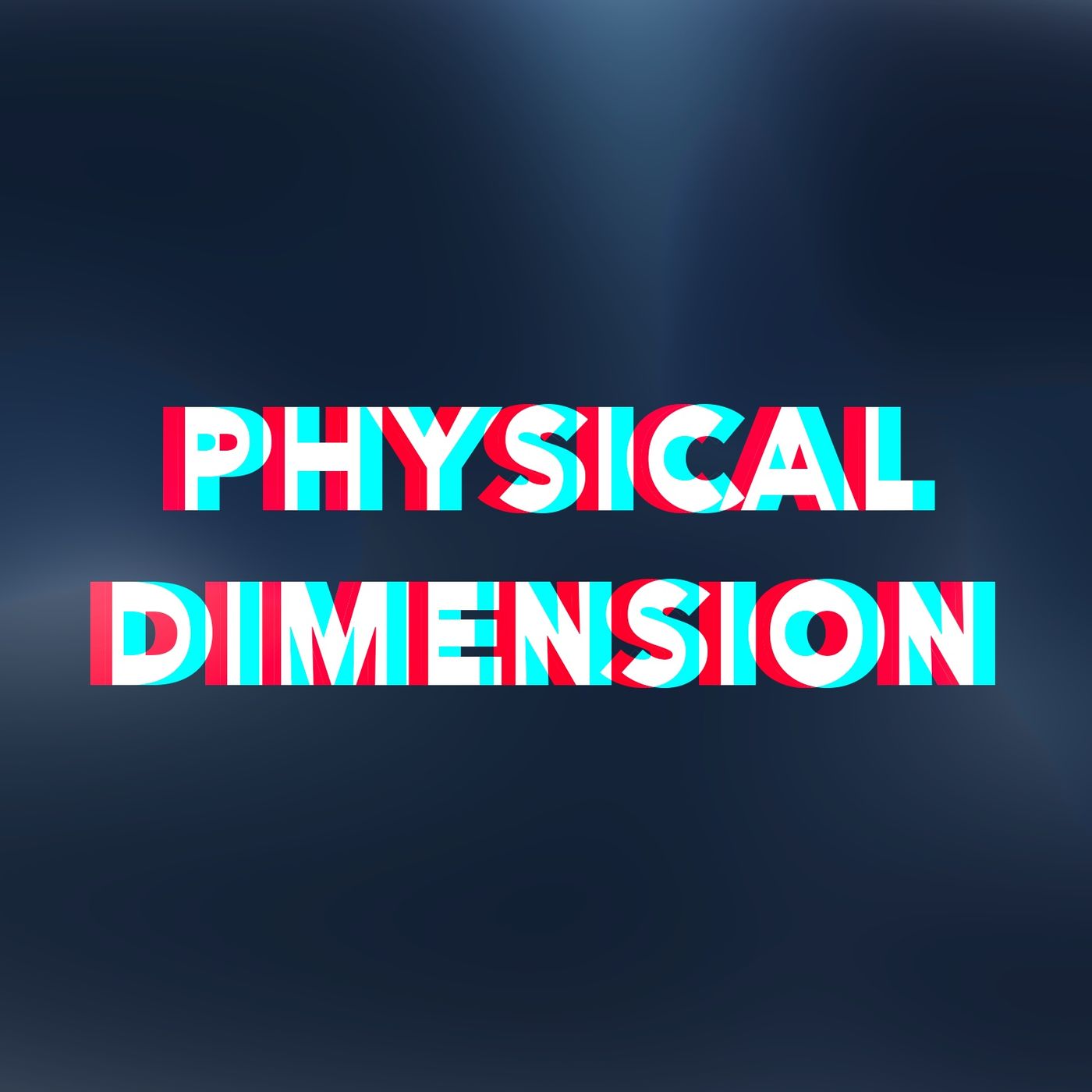




very informative.... thanksss
If you have the same problem, visit https://brighterly.com/5th-grade-math/, where specialists will assist your children in learning mathematics. It is important to note the reasonable prices on this site, as well as the high qualification of specialists. I don't trust private tutors because it's very inconvenient and time-consuming, so I tried for a long time to find good Internet sites to help children study school subjects.
If you're looking for the best math for kids book, there are a few things to keep in mind. Toddlers can already grasp basic math concepts. In order to make math more fun, teach them simple math concepts through play and daily experiences. For older children, you can introduce more complex math concepts with https://www.frolicplayspace.com/target-10/ age-appropriate activities. However, if your child is just starting kindergarten, you may want to look for a more fun math book.
I teach mathematics at one of the universities in my city. Last week I searched the Internet for various interesting articles and tasks for a story at the university. In the end, I found a very useful website that contains a large number of different articles and facts related to mathematics. One of them was - https://artdroid.com/what-are-the-factors-of-7/ . It seemed to me a good material for students. I advise you to study it too.
What a fun episode! The name "Peirce" in "peirce quincuncial projection" is pronounced like "purse", after the 19th century philosopher-logician Charles Sanders Peirce.
Fascinating conversation.
I really wish there was another podcast that goes over the same topics but without Sophia hosting. She is not great at explaining concepts. There is the tendency to do the typical thing of trying to simplify ideas, but in the process end up making it too obscure to really understand. Case in point is the fact that her mom (who teaches math) can't understand what is being explained.
Good episode content. A couple things: much of the discussion about the individual axioms become convoluted with the language and examples that are used. The point is to either clearly state the axiom or provide examples that simplify the understanding, not complicate it. Also, Gödel is roughly pronounced "GER-dle", not "go-DELL."
Thank y'all for this episode... I've been down and depressed for a sec, this brought me back...thanks for the knowledge, laughs, and time taken for doing this during everything.love
False assumptions, bad conclusions. What about the modern example of Jaime Escalante and his ability to challenge elitism to economically challenged young adults with no time to study? Still they overcame it. Why? They wanted something enough to MAKE time for it and they had a teacher that demanded discipline.
Awesome
keep up the good work, love from UK
wonderful
Just what i was looking for, although I can barely keep up sometimes, since my knowledge in math isn't great. Still super interesting!
Lohnverstoß
Great podcast!
it's superb.. loved it.. the creators of this podcast are great :)